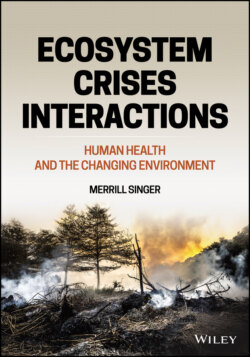Читать книгу Ecosystem Crises Interactions - Merrill Singer - Страница 35
2.3.1 Ecosystems
ОглавлениеCentral to the conceptual repertoire of ecology is the notion that the natural biotic/abiotic world is organized into overlapping ecosystems. While it is useful in building an understanding of the environment to demarcate and even label ecosystems, like all natural systems they actually “are open systems without clear boundaries” (Langmuir & Broecker 2012, p. 6). A tide pool, for example, can be described as an intertidal ecosystem consisting of animals (e.g., sea anemones, starfish, crabs, sponges, fish, mussels, barnacles, limpets), plants (e.g., seaweed, sea grass, rockweed, sea palm, sea lettuce), water, rocks, and sand (Fig. 2.3). However, tide pools are not isolated from the ebb and flow of the ocean, the gases of the atmosphere, or the rays of the sun.
Fig. 2.3 Tide pool.
Source: rreeths/Pixabay.
The term “ecosystem” is used specifically to refer to a community of directly interacting living organisms and nonliving elements such as air, water, rocks, and soil. In an ecosystem, interactions occur among organisms (across all phyla) and between organisms and other environment components. Central to the relationships among these ecosystem components is the flow of matter and energy. A food chain, for example, involves the flow of matter and energy from autotrophs (e.g., plants) to heterotrophs (e.g., herbivores and carnivores) and, eventually, to decomposers—a flow that occurs in all ecosystems.
